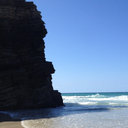Effect of okadaic acid on glucose regulation.
Atslēgvārdi
Abstrakts
Okadaic acid is the main toxin responsible for the natural phenomena known as diarrheic shellfish poisoning (DSP). This toxin is a tumor promoter C38 polyether fatty acid that contains acidic and hydrophobic moieties and is cyclic. Okadaic acid is a potent inhibitor of important classes of protein serine/threonine phosphatases such as protein phosphatase 1 and 2A. The toxin binds in a hydrophobic groove adjacent to the active site of the protein phosphatases and interacts with basic residues within the active site. Therefore okadaic acid causes increases in phosphorylation of proteins that affect a diverse array of cellular processes. For instance, this toxin modulates metabolic parameters in intact cells. In this sense it stimulates lipolysis, and inhibits fatty acid synthesis in adipocytes however increases glucose output and gluconeogenesis in hepatocytes. Additionally, okadaic acid reaches cytotoxic concentrations in the intestinal tissues in accordance with the diarrhea. Recent studies suggested that toxic effects of okadaic acid might be related to modification of nutrients, ionic and water absorption across the small intestine presumably by altering the transporter system. The subject of this review is limited to the effect of okadaic acid on glucose regulation and its cellular as well as clinical implications.



